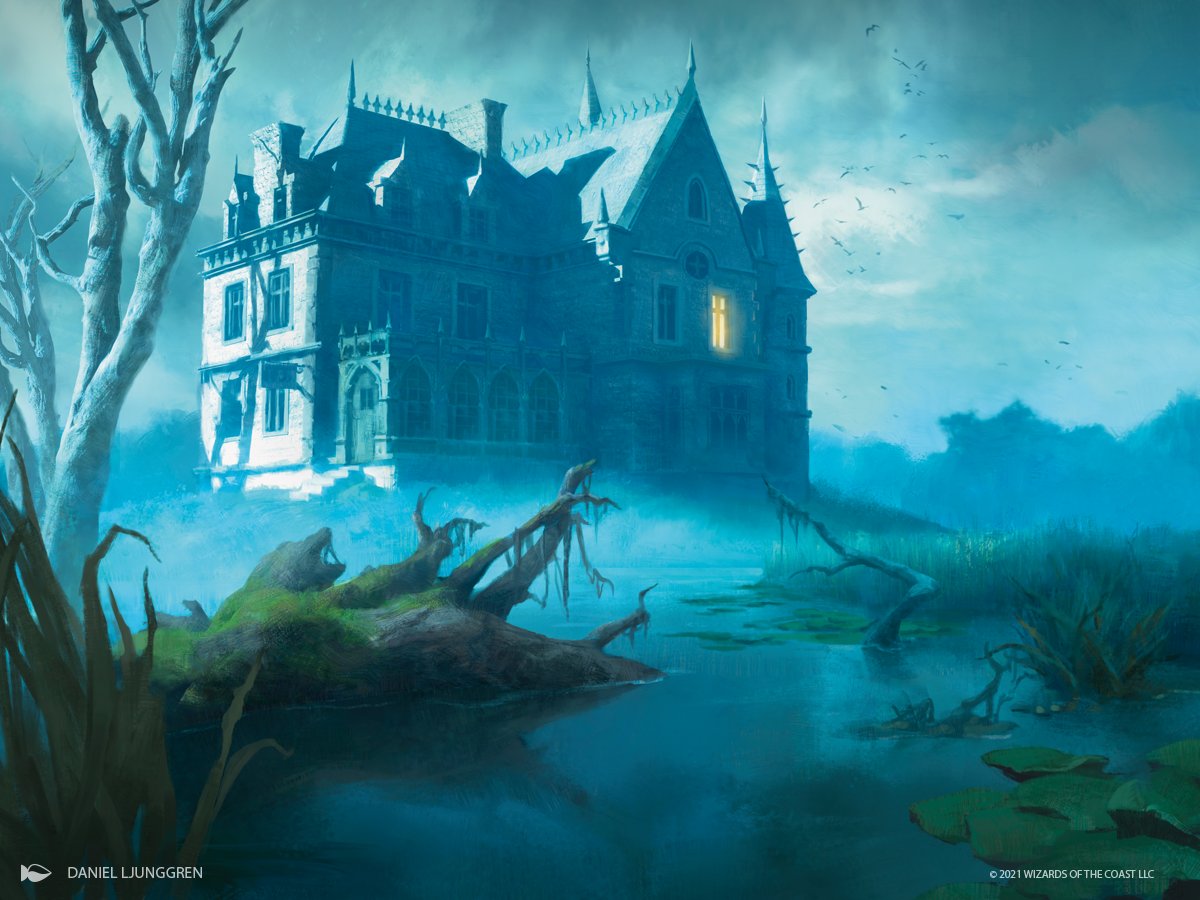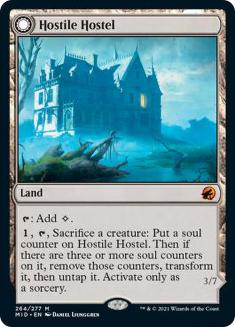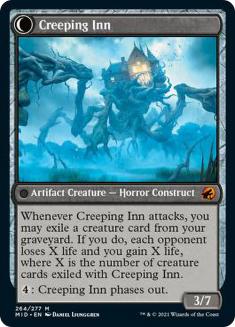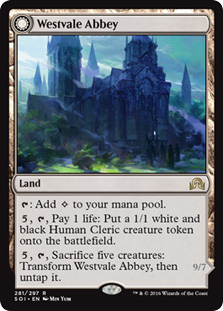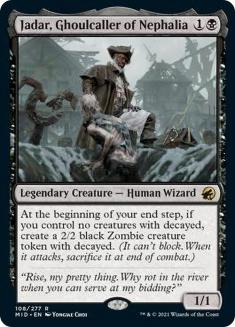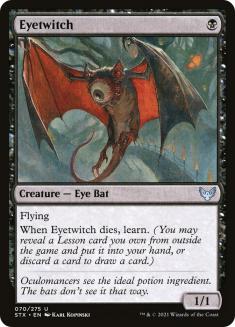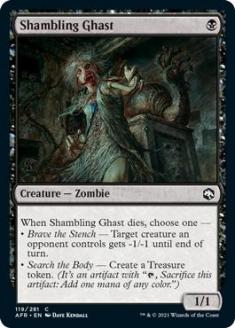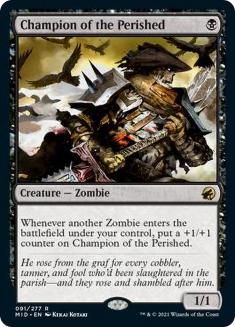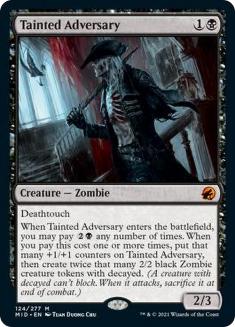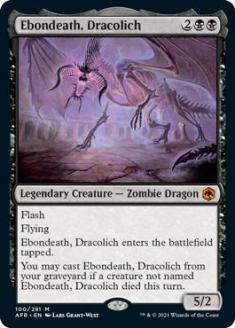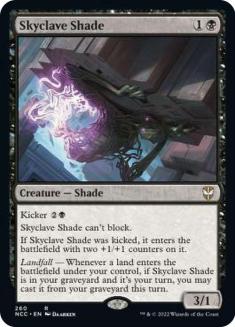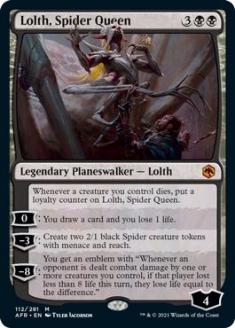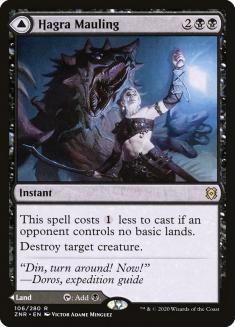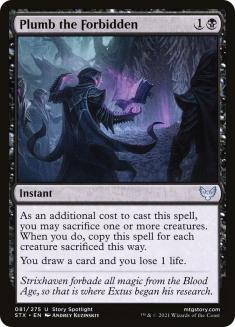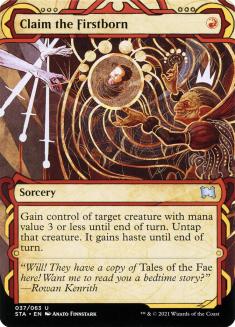I’ve always been a big fan of sacrifice decks. Sam Black always made some of the coolest versions, from Goblin Bombardment to Blasphemous Act, and I was willing and ready to try them all. When Modern was just a wee babe, I would spend hours brewing Lingering Souls decks in the hopes I could play Smallpox without a downside. For the most part, all those decks featured “squishy” creatures, or those types of creatures that are good to sacrifice because they have an enters-the-battlefield or dies ability.
I’ve always been fascinated with exploring graveyard synergy. Most sacrifice outlets are on creatures themselves, which means those engines could be vulnerable to sweepers or spot removal. It’s rare that we’re gifted something like a Goblin Bombardment reprint in Modern, or today’s preview card from Innistrad: Midnight Hunt.
Standard’s newest creature-land is a nightmare come to life. Hostile Hostel provides you with a substantial amount of potential for a very low cost. Most lands like this would enter the battlefield tapped or cost much more mana to get online. The hard truth is that cards like this don’t usually see print because they’re powerful and hard to interact with. Sacrifice outlets that can’t be easily interacted with are potentially dangerous, and it compounds when that land becomes a huge threat on its own.
Hostile Hostel starts off great and keeps getting stronger over time. Entering the battlefield untapped means you won’t be punished for playing your utility lands. It does only tap for colorless, which will probably lead to playing it in one- and two-color decks. It isn’t legendary, which means drawing multiple copies isn’t so bad. Further, the body on Creeping Inn is quite large and offers many different abilities. The drain-life part means an infinite stream of chump blockers won’t get the job done. The potential to phase out means you can protect it from removal spells. The high-toughness body and decent power mean it will be formidable in combat and not vulnerable to damage-based removal spells.
Of note, the sacrifice ability is a sorcery-speed activation, which means you can’t protect your creatures by sacrificing them in response to removal spells, and you can’t make a giant body in combat when your opponent is about to attack you to death. All payments must be made up front, in cash, and there are no refunds.
The easiest thing I can compare it to is Westvale Abbey, a land that was spectacular in its respective format but played out much differently. You have to generate five bodies and spend a ton of mana to turn it into a real monster, but the utility it offered in the mid-game to pump out threats without exposing you to sweepers was ridiculous. On top of that, it worked flawlessly with big flash creatures like Archangel Avacyn.
The payoff for Westvale Abbey might have been more terrifying than Hostile Hostel’s, but it was significantly harder to make work. Both function in similar shells, namely decks that want to produce a large number of creatures, but one gives you a way to sacrifice stuff for graveyard or death synergy, while the other was flood protection with a late-game payoff.
When it comes to putting Hostel Hostile to work, the fact that it untaps itself to start attacking on the third activation is secretly ridiculous. We have plenty of ways to generate mediocre threats in the new Standard format. The decay mechanic means we get to produce more raw bodies for lower costs because those creatures aren’t as resilient. The fact that they die off when they attack, and can’t block, means that sacrificing them is likely the best way to get full use out of them.
So that’s where I’ll start.
Fuel for the Fire
Jadar, Ghoulcaller of Nephalia generates a Zombie every turn if you can sacrifice it. That means these two cards, Jadar and Hostile Hostel, should work flawlessly together. If your whole goal is to make the land into a creature, it shouldn’t be too hard, but I want more payoffs than that. This creature will be one of the core engines for any deck wanting to sacrifice creatures every single turn for value.
Outside of Jadar, having a few other creatures that are cheap and gain value when sacrificing is key.
I’ve seen a few memes about this card when it was first previewed in Strixhaven but I’ve always thought it was pretty cool. I pegged the Lesson/learn mechanic as being underrated right off the rip. Eyetwitch finding cards like Pest Summoning to generate more bodies or Mascot Exhibition when going super-late is pretty cool. Mascot Exhibition is good enough to play on its own, but having it be a payoff for a Tutor-style card when you’re flooded or the game’s gone long is excellent. How big or deep your Lesson cards go is up to you.
Shambling Ghast is such a good sacrifice target that I wouldn’t consider anything else in the current Standard. It can slay an early opposing Lotus Cobra or Magda, Brazen Outlaw or just build toward a bigger and better spell by making a Treasure token. Both options are outstanding, and equally valid in drastically different matchups.
If I’m mostly or all Zombies, Champion of the Perished could be a cool option for the early drops. It gets pretty large when paired with Jadar and a steady stream of sacrifices. While this isn’t the direction I want to go currently, it could be the way we end up building these decks in the future.
Of the multikicker cycle of creatures, Tainted Adversary is black’s way to keep up with scaling as the game progresses. In the early turns, it’s a cheap deathtouch creature that has a high toughness for the cost. That means it snuffs out some of their early aggression while offering a trade with a larger creature in the later turns. As the game progresses, you get the option to create some Zombies. Those Zombies can be used for fodder or to present an alpha attack.
These creatures are expendable and don’t play defense, so my goal is to find something like Blood Artist for some combo kills in the later turns. Since we’re also losing Woe Strider, I’ll also be searching for free sacrifice outlets. Until then, we’ll just value-sacrifice our small creatures until our opponent packs it in.
When Ebondeath, Dracolich was first previewed, I wrote an article all about how to use it. It is at home in a shell featuring sacrifice effects. It was a bit overshadowed before now, but enough of the traditional sacrifice deck is rotating that we have to find new players. If we’re planning to play Mono-Black, Ebondeath is an easy inclusion.
I would normally want Skyclave Shade in the same type of decks that would want Scrapheap Scrounger: low-to-the-ground aggro that wants a recursive threat. In this strategy, it will be doing a lot of the aggressive stuff, but also acting as a cheap way to keep sacrificing creatures without any real downside. All you need to do is hit your land drops and you should be able to keep bringing it back to the chopping block. If you’re flooded with Village Rites and the like, this can mean all the difference in stalling out and keeping the game going.
In sacrifice decks, having a threat like this provides you with an engine. Without that engine, you can occasionally run out of creatures to sacrifice, even if they’re gaining you value along the way. Sometimes you just want raw bodies on the field.
Creatures (22)
- 4 Skyclave Shade
- 4 Eyetwitch
- 2 Ebondeath, Dracolich
- 4 Shambling Ghast
- 4 Jadar, Ghoulcaller of Nephalia
- 4 Tainted Adversary
Planeswalkers (3)
Lands (21)
Spells (14)

This build centers around a planeswalker than many have tried and failed to make viable. I’m hoping this is the point where it becomes broken.
Lolth, Spider Queen suffers from a relatively high casting cost and not actually killing an opposing creature. Most planeswalkers that cost five or more mana offer the pilot a way to interact with opposing creatures. Lolth does this as well with summoning some 1/2 Spiders, yet doesn’t actually kill annoying opposing creatures like Goldspan Dragon. Blocking them will only get you so far before they eventually eat you or Lolth.
My goal is to build an impenetrable battlefield where your opponent can’t punch through and you’re able to have enough fuel to aggressively make Spiders every single turn. All of your creatures are expendable, which means you’re mostly fine against removal. We have a high land count to make sure we can hit five mana in a reasonable time frame. Further, many of those lands double as spells, which I’m hoping makes for some smooth draws.
Speaking of spells that double as lands, Hagra Mauling should probably see more play. Similar to Vraska’s Contempt in its Standard format, Hagra Mauling should gain some value with the format slowing down a bit. Creatures hopefully won’t be gaining massive amounts of card advantage over time either, which is what makes spot removal so bad. With the rotation of Throne of Eldraine, all the adventure creatures will be gone, and one-for-one removal might be back on the menu.
Hagra Mauling isn’t spectacular. I expect it will be played as a land on the second or third turn quite often, but there’s no worse feeling than drawing a land when facing down a Goldspan Dragon. When that land ends up being a removal spell, the entire game changes. I’m also hoping initial manabases will be greedy, making it end up costing three mana more often than four.
I think Plumb the Forbidden is cool, but I don’t know if I’d ever want more than one or two copies in my list outside of some dedicated combo I want to find. This card is a great way to explode all you decayed Zombies and turn them into real actionable resources. If there ends up being some sort of Blood Artist in the format that’s cheap, more copies of Plumb the Forbidden would be great. We could go much harder on making decayed Zombies, as it doesn’t seem very difficult to load up on those paper-thin brain munchers.
Historical Context
As we move into older formats, we get access to a multitude of powerful cards that can benefit from a constant stream of sacrificing creatures. Historic currently has Rakdos and Jund Sacrifice decks that could potentially benefit from Hostile Hostel. Using it alongside Mayhem Devil is just dirty!
Let’s take a look at what Jund Food would look like if we added in the powerful new creature-land.
Creatures (19)
Lands (24)
Spells (17)

This build of Jund Food goes hard on Claim the Firstborn, not only to help alleviate pressure from opposing threats but also because it works so well with Hostile Hostel. With this integral spell rotating out of Standard, I fear we may never get to see the full potential of Hostile Hostel. In Historic, Claim the Firstborn is still excellent, and it continues to get better as more cheap creatures like Dragon’s Rage Channeler join the format.
Stealing a creature for one mana and eating it is not a new play pattern, but here it demands discussion, as it’s one of the main ways to amplify the strength of Hostile Hostel. Instead of sacrificing your own creatures, you get to sacrifice your opponent’s, which does double duty of erasing that pressure and pushing toward unlocking your powerful threat.
This Jund Food deck doesn’t have too much trouble closing games. It usually does so in small increments via Mayhem Devil and Cauldron Familiar, but a land with a sacrifice outlet built in is both wanted and put to good use. Any excuse to play more lands is a good thing when you’re grinding with Trail of Crumbs. Finding lands that flawlessly enter the mix is rare, but I think Hostile Hostel will ultimately find a good home here.
In Rakdos, it might be a little awkward alongside Kroxa, Titan of Death’s Hunger due to the restrictive cost, but I would still likely play one or two. It’s just a great utility land with very little downside. As far as I can tell, the only real downside is that it taps for colorless, which means we need to be cognizant of our color requirements when deckbuilding. This is why my initial Standard build is a monocolored deck.
Learning from Standards Past
If I’ve learned anything from playing Magic all these years it’s that formats wax and wane in power level. Standard is about to have a dramatic decrease in power, which means lands that actually do something will be at a premium. Cards that don’t replace themselves lead to flooding, which in turn makes us look to weaker spells or lands that let us use all our mana every turn.
Aggro decks in new formats often struggle with this, as players build what looks like an okay deck but it just doesn’t have any late-game power. That’s a lot harder at the moment, as everyone knows the creature-lands like Den of the Bugbear and Lair of the Hydra absolutely slap, but we just need to find new ways to actually get full value out of all our mana each turn. Playing with Adventures and escape and companions let us do this on easy mode, as it felt like we basically never ran out of stuff to do. In the new Standard, cards like Hostile Hostel will likely show up in places you might not expect them to.
We should have the full card list for Innistrand: Midnight Hunt in a few days, which will make building these decks a lot easier. All it takes is a single common or uncommon that gives us a scry or a point of life when one of our creatures die, or maybe I just need to branch out a bit into other colors and experiment with Fleshtaker or even Relic Vial. Regardless, there’s much brewing to do. This point in the Standard season is always the most fun, because so many cards are leaving and we’re left examining the strength of spells and lands that have been overshadowed for a year.
Before I go, I wanted to leave you with a bonus decklist for one of my favorite cards ever (re)printed:
Creatures (14)
Lands (14)
Spells (32)
- 3 Mountain
- 4 Island
- 2 Opt
- 4 Faithless Looting
- 2 Pillar of Flame
- 2 Crash Through
- 2 Chart a Course
- 2 Finale of Promise
- 4 Expressive Iteration
- 3 Unholy Heat
- 4 Consider
Sideboard


